Excel Parentheses
Parentheses
The operator () can be used to reverse the order of an operation.
When parentheses are used, Excel calculates the values inside of them before calculating the remainder of the formula.
To add parentheses to a number, type () on both sides of the number, such as (1+2).
Examples
No parentheses
=10+5*2
The result is 20 because it calculates (10+10)
With parentheses
=(10+5)*2
The result is 30 because it calculates (15)*2
Formulas can have groups of parentheses.
=(10+5)+(2*4)+(4/2)
Note: In formulas enclosed in parenthesis, such as =(A1+A2)*B5, cells can be used as values. To keep things simple, we have used manual entries in our examples.
Let’s examine a few actual Excel instances.
Without Parentheses
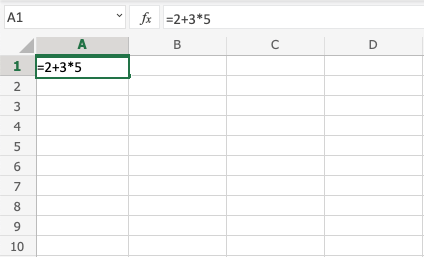
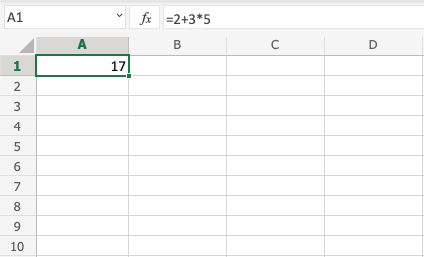
The result is 17, the calculation is 2+15. It uses 15 because 3*5=15.
With One Parentheses

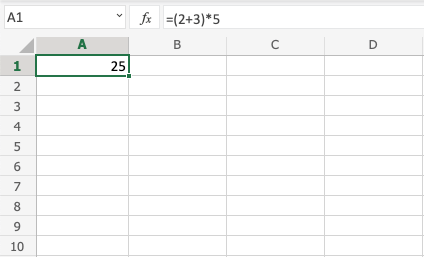
The computation is 5*5, and the outcome is 25. Because it first computed the values inside the parenthesis (2+3)=5, it uses 5.
With Many Parentheses
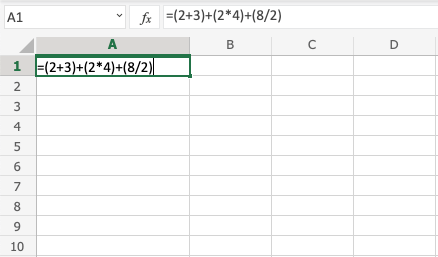
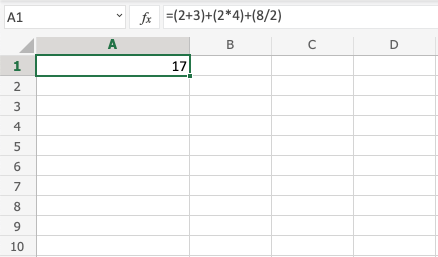
17 is the outcome; the computation is 5+8+4. First, the numbers enclosed in parenthesis are computed.
Nesting Parentheses
Parentheses may need to be nestled when utilizing more complex calculations. This can be compared to an onion, which has numerous layers. Excel will compute the numbers included in parenthesis first, beginning with the inner layer and working its way outward.
Example no nesting
=2*2+3*4+5*5*2
It calculates the values flat as you would do with a calculator.
Example nesting
=((2*2)+(3*4)+(5*5))*2
Let’s dissect and clarify.
Layers created by nesting resemble an onion. Multiple layers are possible. The inner and outer layers are the two used in this example.
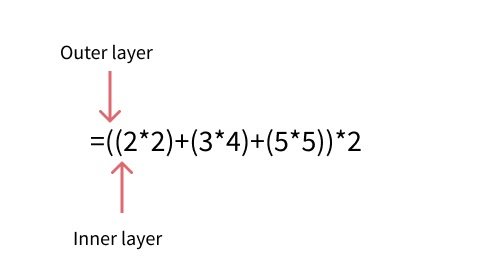
It starts with calculating the numbers in the inner layer:
- =((2*2)+(3*4)+(5*5))*2
- =((4)+(12)+25))*2 Calculates the inner layer
- =(41)*2 Calculates the outer layer
- 82
Chapter Summary
The order of an operation can be altered by using parentheses. The first numbers to be calculated are those enclosed in parenthesis. Parentheses can be used in formulas. Nesting can be used by more complex formulas to build layers of processes, much to an onion. The inner layer is calculated first, followed by the next, and so forth.
